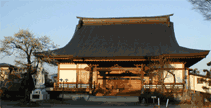  |
Can't read/view Japanese characters?
Try the romaji version instead.
Lesson 12: It's in the car.
| Recall
from Lesson 4 that we learned how to say that the location of something
is here, there, or over there. This is useful information if you can see
something or are pointing at something. However, what if you can't see
the location you are talking about, or you want to explain where something
is in relation to something else?
First, there are two different ways of saying something exists. One is for animate things (people and animals) and one is for inanimate things. These are the verbs います and あります. These both mean "to exist." います is used for animate things and あります is used for inanimate things. To ask where a place or inanimate object is, one can use the form: XXは どこに ありますか。 Where is XX? For people and animals, imasu is used instead: XXは どこに いますか。 Where is XX? Note the use of に. に was previously shown in Lesson 7; its meaning here is slightly different. に in this case means 'at.' どこに means 'at what location.' Similarly, ここに would mean 'at this location.' The above sentences literally translate as 'As for XX, at what location does it exist?' In order to say where something or someone is, just replace the 'どこ' with the location.
|
|||||||||||||||||||||||||
|
Examples: マイクさんは どこに いますか。 |
Where is Mike? |
||||||||||||||||||||||||
マイクさんは がっこうに います。 |
Mike is at school. | ||||||||||||||||||||||||
ねこは どこに いますか。 |
Where is the cat? |
||||||||||||||||||||||||
ねこは あそこに います。 |
The cat is over there. |
||||||||||||||||||||||||
わたしの りんごは どこに ありますか。 |
Where is my apple? |
||||||||||||||||||||||||
ここに あります。. |
It's here. |
||||||||||||||||||||||||
| かばんは どこに ありますか。 | Where is the briefcase? | ||||||||||||||||||||||||
| かばんは アラスカに あります。 | The briefcase is in Alaska. | ||||||||||||||||||||||||
OK, now we can move on to specific locations. Where exactly is the cat? Is it under the desk? Inside of a box? Is the book in the bookshelf or on top of it? We will need some more vocabulary in order to say these things.
|
|||||||||||||||||||||||||
|
Examples: |
|
||||||||||||||||||||||||
|
Now we need to combine the location words with objects to create such locations as 'in the bag' etc. We do this using the particle の. Recall from Lesson 2 that の indicates possesion. |
|||||||||||||||||||||||||
|
Examples: くるまのうえ |
on the car |
||||||||||||||||||||||||
|
Note that where in English these phrases are indicated with prepositions these are more like postpositions. OK, now that we have our new locations, we can insert them in our location sentence as before.
|
|||||||||||||||||||||||||
|
Examples: ねこは どこに いますか。 かばんは どこに ありますか。 |
Where is the cat? Where's the bag? |
||||||||||||||||||||||||
|
Lesson 12 Vocabulary: |
|
||||||||||||||||||||||||
あります |
to exist (for inanimate things) |
||||||||||||||||||||||||
います |
to exist (for animate things) |
||||||||||||||||||||||||
に |
particle meaning at |
||||||||||||||||||||||||
の |
possessive particle |
||||||||||||||||||||||||
| まえ | front | ||||||||||||||||||||||||
| うしろ | back, behind | ||||||||||||||||||||||||
| よこ | next to, along side | ||||||||||||||||||||||||
| うえ | top, above | ||||||||||||||||||||||||
| した | bottom, under | ||||||||||||||||||||||||
| なか | inside, middle | ||||||||||||||||||||||||
| そと | outside | ||||||||||||||||||||||||
| あいだ | between, interval | ||||||||||||||||||||||||
| むこう | beyond | ||||||||||||||||||||||||
| となり | next door, neighboring | ||||||||||||||||||||||||
| ひだりがわ | left side | ||||||||||||||||||||||||
| みぎがわ | right side | ||||||||||||||||||||||||
| かばん | bag,briefcase | ||||||||||||||||||||||||
| アラスカ | Alaska | ||||||||||||||||||||||||
| くるま | car | ||||||||||||||||||||||||